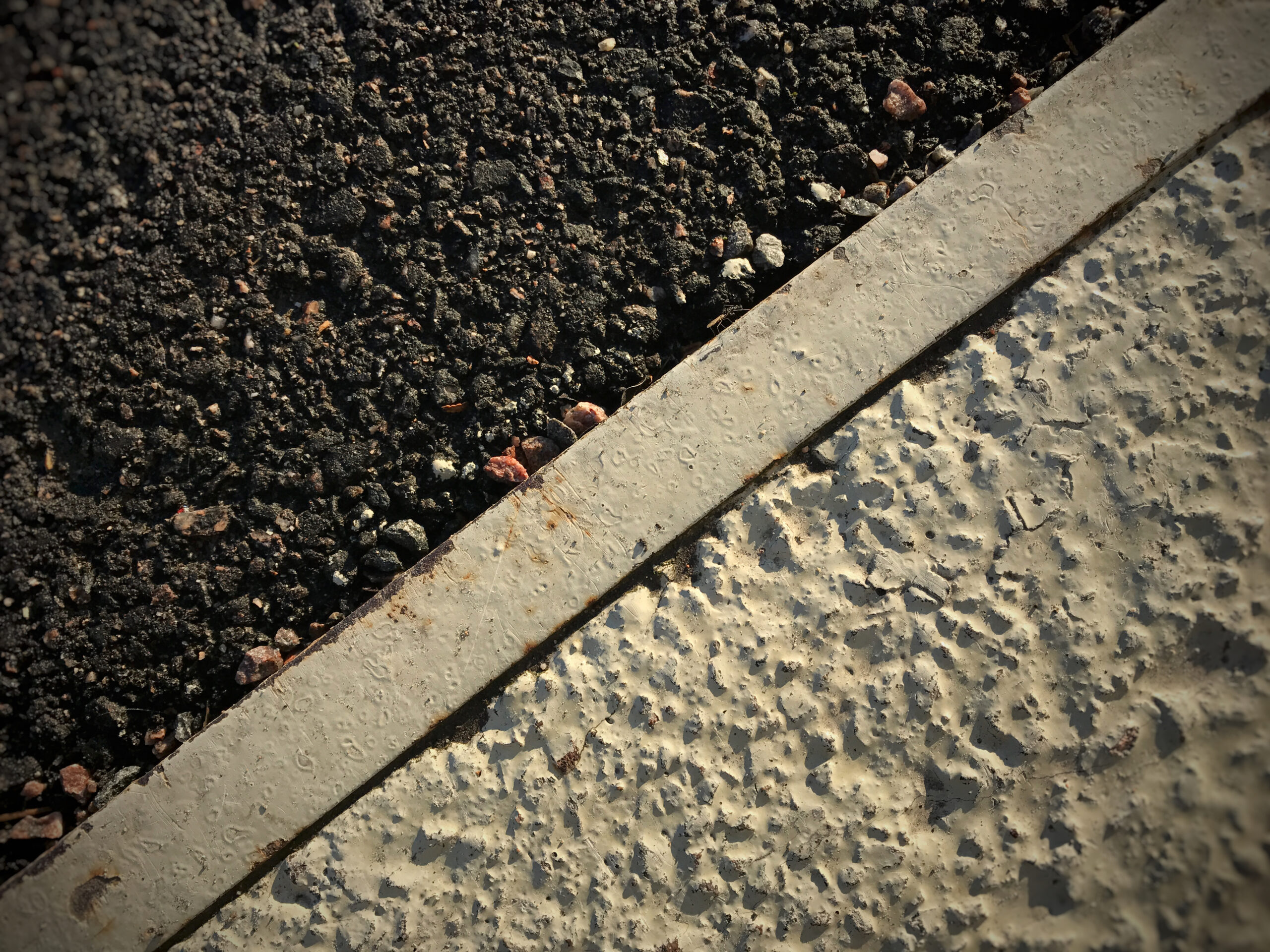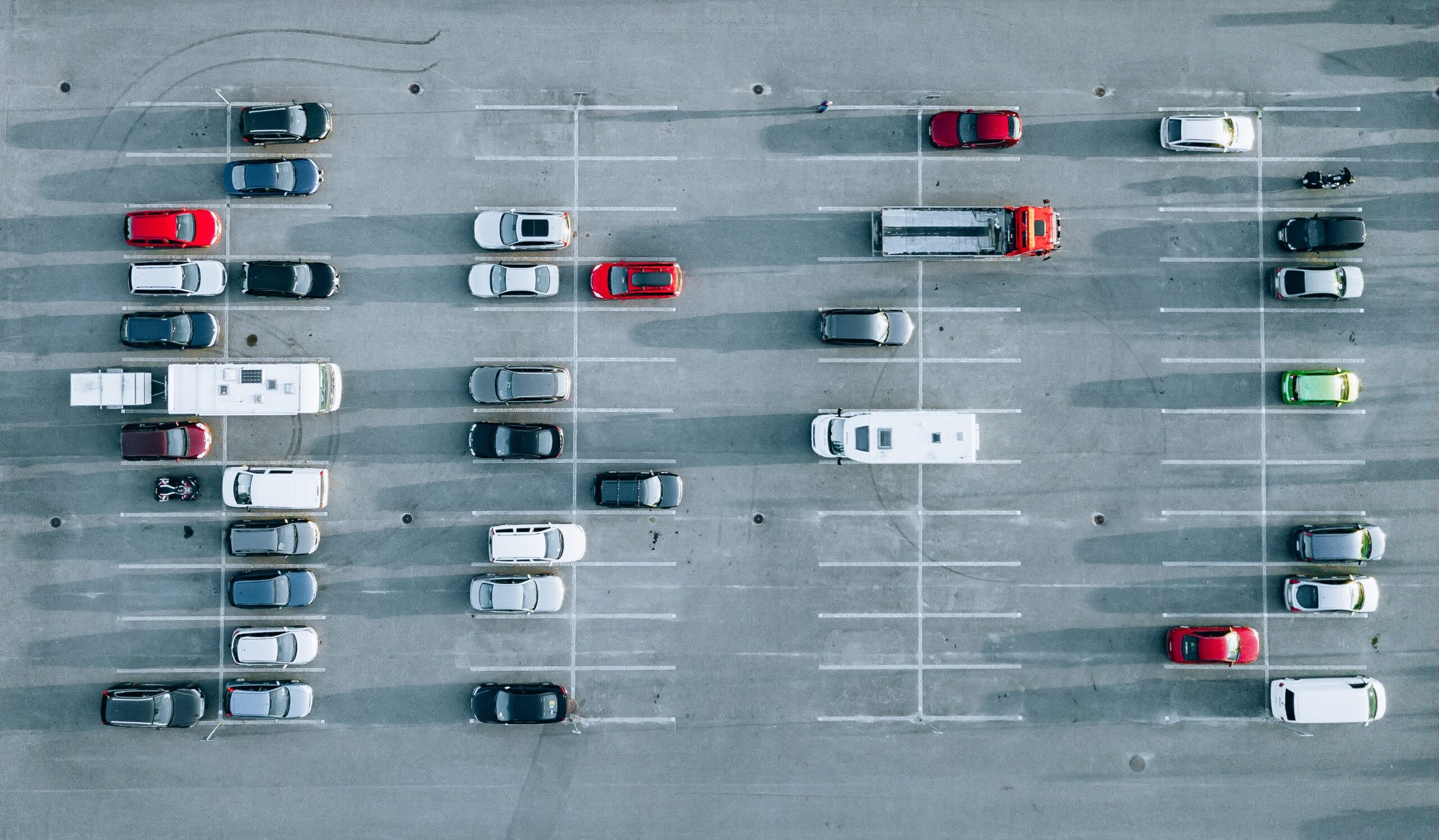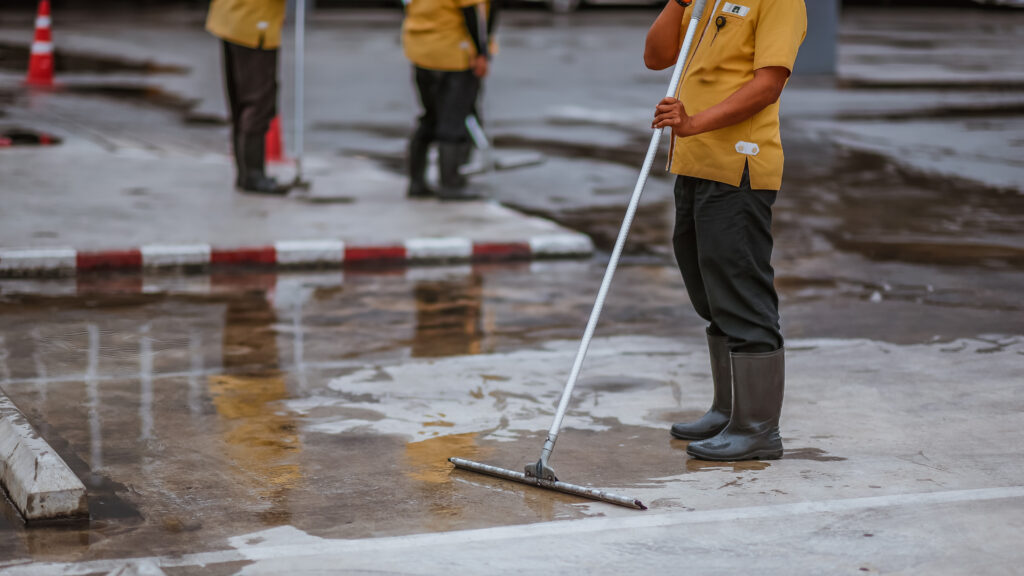
Parking lot maintenance solutions such as striping, crack sealing, and sealcoating are vital for preserving safety, appearance, and structural durability. Preventive care offers a compelling return.
Washington State Transport Center estimates that for every $1 spent on preventative pavement maintenance, between $4 and $10 is saved on rehabilitation, effectively extending pavement lifespan. This evidence highlights how proactive maintenance enhances longevity and delivers significant cost savings.
This comprehensive guide will explore each key service, including stripping, crack sealing, and sealcoating. Let’s discuss how these essential services enhance longevity, safety, and visual appeal in your parking lots.
Why Is Parking Lot Maintenance Important?
Regular maintenance is essential to keeping parking lots safe, visually appealing, and fully functional. Cracks, potholes, poor drainage, or faded markings can lead to serious safety issues. According to the National Safety Council, tens of thousands of crashes occur in parking lots each year. Such mishaps may involve pedestrians or vehicles, often resulting from limited visibility, slippery surfaces, or unclear signage.
Meanwhile, neglecting drainage or deteriorating surfaces can trap water and damage pavement, accelerating deterioration. The aesthetic aspect also matters. Faded stripes and worn barriers reduce clarity, leading to misparked vehicles or confusion.
To avoid these issues and ensure safety and functionality, investing in parking lot maintenance services is key. With transparent, well-maintained surfaces and proper visuals, both safety and curb appeal are improved. Building on this foundation, we’ll explore the key long-term benefits of keeping parking lots in top condition next.
Benefits of Regular Parking Lot Maintenance
Here are some benefits that you can experience with regular parking lot maintenance.
- Enhanced property value: A well-kept parking area boosts overall impressions and resale or leasing potential.
- Reduced repair costs: Addressing minor issues early avoids expensive resurfacing or complete reconstruction.
- Improved customer experience: Clear markings, smooth pavement, and clean surfaces create a positive, hassle-free environment for visitors and employees.
- Safer environment: Well-maintained lots reduce tripping hazards, vehicle damage, and confusion, contributing to fewer incidents and claims.
Parking Lot Striping: Better Safety and Organization
Parking lot striping refers to the painted lines and symbols that define parking spaces, traffic lanes, crosswalks, and accessible zones. These markings are essential for organizing vehicle movement, streamlining traffic flow, and guiding pedestrian navigation.
Clear, well-maintained striping helps reduce confusion and potential collisions, reinforcing a safe and orderly environment. The National Safety Council notes that tens of thousands of crashes occur annually in parking lots and garages, with many resulting from poor visibility or inadequate markings, which underscores how vital clear striping is for safety.
Why Proper Striping Matters?
Well-maintained striping significantly enhances safety by effortlessly directing both drivers and pedestrians. When lines, arrows, and designated zones are visible and consistent, confusion is minimized, reducing the likelihood of accidents and vehicle damage.
Additionally, proper striping ensures compliance with regulations such as the ADA (Americans with Disabilities Act). Marked accessible spaces and proper signage protect vulnerable users and shield businesses from fines. Investing in parking lot striping services ensures that your parking lot is not only safer but also legally compliant and organized. Clear striping eliminates ambiguity and creates a well-structured space for all users.
The Parking Lot Striping Process
Parking lot striping involves several key steps to ensure lines are straight, visible, and long-lasting:
- Layout design involves measuring and marking the lot to ensure proper spacing, traffic flow, and ADA compliance.
- Surface preparation includes cleaning debris, removing old paint if needed, and ensuring the pavement is dry and smooth.
- Application of markings: Using high-quality traffic paint or thermoplastic materials for durability and visibility.
- Detail work: This involves adding arrows, crosswalks, symbols, and other custom markings as required.
- Final inspection: The inspection ensures all lines are crisp, accurate, and meet safety and regulatory standards.
How Often Should Parking Lot Striping Be Reapplied?
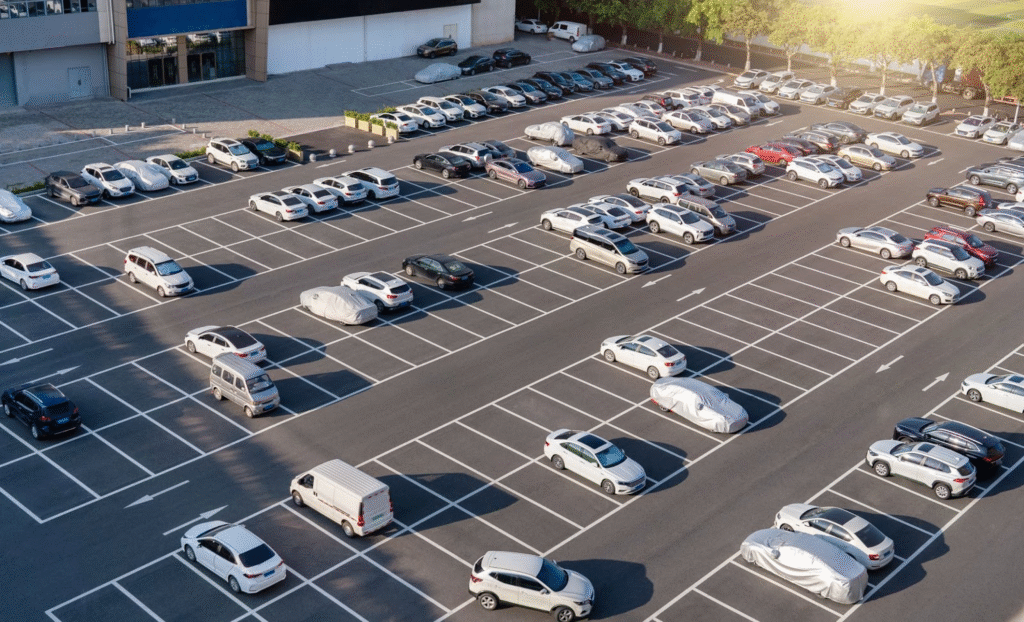
The frequency of re-striping depends on traffic volume, weather exposure, and material used. A general recommendation is to inspect striping annually and plan for reapplication every 1–3 years, especially in high-traffic or harsh-weather regions.
More frequent refreshes in lots with heavy use or intense sunlight and precipitation help maintain visibility and functionality. Regular evaluation ensures your lot remains safe, compliant, and visually appealing.
Parking Lot Crack Sealing: Preventing Further Damage
Crack sealing is a proven pavement preservation technique that involves cleaning and filling fissures in asphalt to block water, dirt, and debris from penetrating the surface. This barrier is critical because water infiltration is the leading cause of asphalt failure. It weakens the base, triggers freeze-thaw damage, and accelerates cracking.
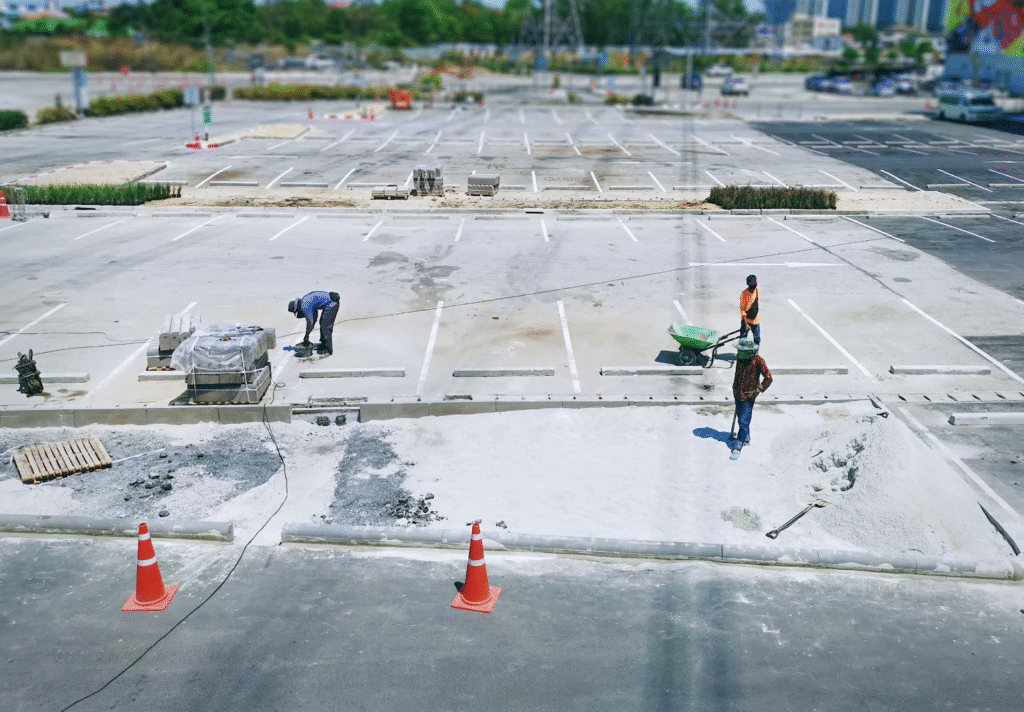
By sealing early, you not only stop damage from spreading but also slow the rate of deterioration, allowing your pavement to perform well for years longer. According to the Federal Highway Administration, treatments such as crack and fog sealing can extend pavement life by 1 to 4 years when applied to structurally sound surfaces.
Investing in parking lot crack sealing services translates into significant cost savings, as minor preventive work costs a fraction of full resurfacing or reconstruction. In short, crack sealing is one of the most cost-effective ways to protect your parking lot investment.
Why is Crack Sealing Essential?
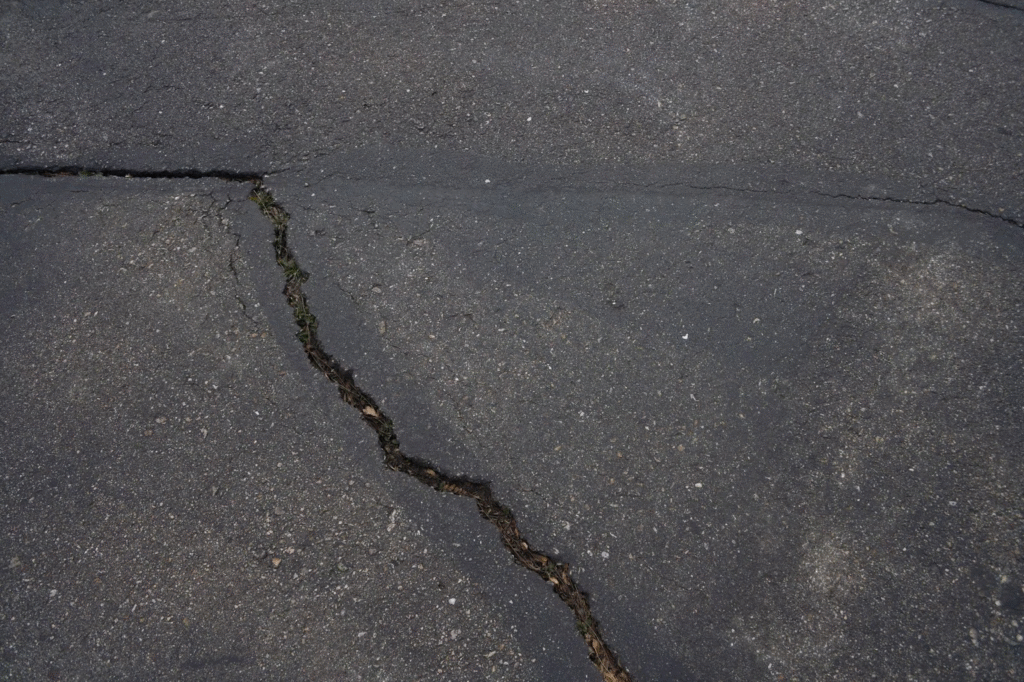
Untreated cracks allow water to seep into the base, accelerating pavement failure. Pavement failures lead to potholes, base collapse, and costly reconstruction. Crack sealing is a barrier that preserves structural integrity and delays expensive repairs. Property owners can prevent widespread pavement degradation by addressing minor damage early and substantially reducing long-term maintenance costs.
The Crack Sealing Process
A basic version of the crack sealing steps includes:
- Inspection and identification: It involves assessing crack types (e.g., transverse, longitudinal, alligator) and urgency.
- Surface preparation: Preparing the cracks using air, routers, or wire brushing is crucial to ensure sealant adhesion.
- Application: Inject hot-poured, ASTM-compliant sealant into cracks, sometimes after creating a reservoir channel for movement.
- Finishing and curing: This involves smoothing over excess sealant and allowing it to heal before reopening to traffic.
Parking Lot Sealcoating: Protecting Your Investment
Sealcoating is a protective coating applied to asphalt to shield it from damaging elements like UV rays, moisture, and chemical spills. This treatment helps slow oxidation and surface wear, preserving the pavement’s structure and appearance. Proper sealcoating can significantly prolong the life of asphalt surfaces.
According to the Federal Highway Administration, surface treatments, including sealcoating, can typically extend pavement life by 2 to 4 years when applied early and appropriately. STAR Inc. reports that with quality sealcoating, you can extend the life of your surface by up to 300%. This is a valuable insight for property owners aiming to avoid premature deterioration.
For optimal results, it’s essential to invest in parking lot sealcoating services to ensure proper application and maximize the longevity of your pavement. Let’s discuss the specific benefits, timing, and process behind this key preventive technique.
The Benefits of Sealcoating Your Parking Lot
Sealcoating is more than just a cosmetic upgrade. It’s a strategic investment in the long-term performance of your parking lot. By applying a protective barrier, you gain several advantages that impact your pavement’s look and functionality.
- Extends pavement life: A protective layer helps guard against weather and wear, potentially doubling the surface’s longevity. This means fewer large-scale repairs and more years of reliable service.
- Enhances appearance: A fresh sealcoat restores the asphalt’s deep, uniform black finish, significantly boosting curb appeal. This can create a positive first impression for customers, tenants, or visitors.
- Reduces maintenance costs: Preventing surface damage means fewer repairs down the road, translating into long-term savings. Over time, this can free up budget for other property improvements.
- Protects against chemical damage: Sealcoating shields pavement from oil, gasoline, and deicing agents, which can deteriorate asphalt over time. This extra protection keeps your lot safer and more durable in high-traffic or harsh-weather conditions.
These benefits make sealcoating one of the most cost-effective maintenance measures for any parking lot.
When Should You Apply Sealcoating?
The ideal time to sealcoat is after repairing cracks or potholes and once the surface is clean and dry. Best results occur in moderate temperatures above 50°F with low humidity, ensuring proper curing and adhesion.
Applying sealcoating every 2–3 years strikes the right balance between protection and cost-efficiency for most parking lots. In areas with harsher climates or heavy traffic, more frequent application may be beneficial to maintain performance and appearance.
The Sealcoating Process
Sealcoating is most effective when done using a methodical, step-by-step approach.
- Surface cleaning: Remove dirt, debris, oil spots, and vegetation to ensure proper adhesion.
- Crack and pothole repair involves sealing cracks and patching damaged areas before coating.
- Application of sealcoat: Evenly spread a quality sealant using squeegees, brushes, or spray equipment.
- Detail work: Edge around curbs, drains, and structures for a clean, professional finish.
- Curing period: Allow the sealcoat to fully dry and harden before reopening to traffic.
Common Parking Lot Issues and How to Address Them
Parking lots often face persistent challenges that can degrade safety, appearance, and structural integrity. If left unaddressed, these issues can escalate quickly, from potholes and poor drainage to fading markings. The good news? Regular maintenance services like crack sealing, sealcoating, and striping work together to mitigate these problems and extend the pavement’s lifespan.
Potholes and Surface Damage
Potholes typically form when water infiltrates the pavement base and repeated traffic stress causes the surface to break apart. This is especially common in freeze-thaw climates. Left untreated, small cracks can evolve into large, dangerous potholes. Regular crack sealing and timely resurfacing provide lasting results that help prevent these failures by blocking moisture entry and preserving structural support.
Poor Drainage and Water Damage
Pooling water is a silent but powerful enemy of asphalt integrity. Persistent standing water weakens the pavement base, leading to cracking and early deterioration. Adequate drainage and routine sealcoating work in tandem to protect the surface. Clearing blocked drains and applying a sealcoat barrier are smart preventive steps that prevent costly damage.
Cost of Parking Lot Maintenance: What to Expect?
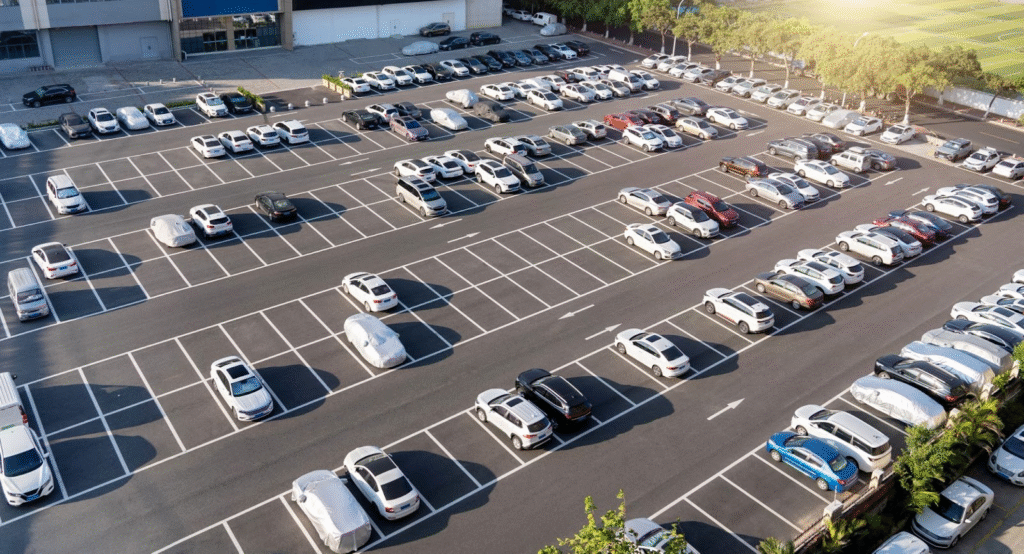
Keeping your parking lot in good condition is more than just a cosmetic choice; it’s a strategic investment. Routine upkeep like striping, crack sealing, and sealcoating can prevent minor problems from becoming major expenses. When you understand both the short-term costs and the long-term savings, it becomes clear that proactive maintenance almost always pays for itself.
Factors Affecting Parking Lot Maintenance Costs
The price of maintenance isn’t one-size-fits-all; a few key factors shape it:
- Lot Size: Larger areas often have a lower cost per square foot, but the total bill will naturally be higher.
- Current Condition: Neglected lots may require extra cleaning, crack repair, or patching before maintenance can begin.
- Materials & Labor Quality: Higher-grade sealants and experienced crews cost more upfront but extend the time between services, saving money in the long run.
For example, sealcoating generally costs $0.15–$0.30 per square foot, with total project costs ranging from $1,500 to $6,000 depending on size and condition.
Comparing Maintenance Costs to Full Asphalt Replacement
The real value of routine maintenance becomes clear when compared to the cost of major asphalt repairs or complete replacement.
- Sealcoating: It costs $0.15–$0.30 per sq. ft.
- Crack Sealing: It costs just a few cents per linear foot.
- Complete Resurfacing/Replacement: It costs several dollars per sq. ft., often 10–20 times the sealcoating cost.
By applying sealcoating every 3–5 years and repairing cracks promptly, you can extend the life of your asphalt by 1.5 to 2 times. In other words, spending a few thousand now can prevent a later $50,000–$100,000 replacement. Maintenance isn’t just upkeep; it’s a high-ROI investment in safety, appearance, and long-term cost control.
How Often Should You Perform Parking Lot Maintenance?
Regular maintenance is not just about looks; it’s about preserving structural integrity and maximizing lifespan.
Frequency of Parking Lot Striping
Clear, visible markings aren’t just for aesthetics. They directly affect safety, traffic flow, and ADA compliance. Over time, paint fades due to sunlight, rain, snow removal, and vehicle traffic. When markings lose contrast, driver confusion increases, and safety hazards follow.
Recommended Schedule:
High-traffic lots such as malls, hospitals, and schools should be sealcoated every 12 to 18 months. Moderate-traffic lots, including offices and small retail spaces, need sealcoating every 18 to 24 months. Similarly, low-traffic lots like residential areas or gated communities can be sealcoated every 2 to 3 years.
Frequency of Crack Sealing
Cracks may seem minor, but once water penetrates the base layers, freeze-thaw cycles and traffic pressure can turn a small hairline into a pothole within a single season.
The FHWA and state DOTs consistently report that early crack sealing is one of the most cost-effective pavement preservation methods. Preventing water infiltration can delay costly overlays by years.
Recommended Schedule:
Parking lots should be inspected twice a year, in spring and fall, for damage. Cracks should be sealed every 1 to 4 years, depending on climate and rate of crack growth. If cracks are 1/4 inch wide or larger, they should be repaired immediately.
Frequency of Sealcoating
As mentioned before, sealcoating is a protective barrier that shields asphalt from oxidation, moisture intrusion, and chemical spills.
Recommended Schedule:
Sealcoating is generally needed every 2 to 3 years in most climates. In harsh climates, sealcoating may be required every 1.5 to 2 years. Avoid over-sealcoating, as it can cause surface buildup and reduce traction.
Parking Lot Maintenance for Different Types of Properties
Each property type places different demands on asphalt, so your maintenance plan should be tailored, not generic.
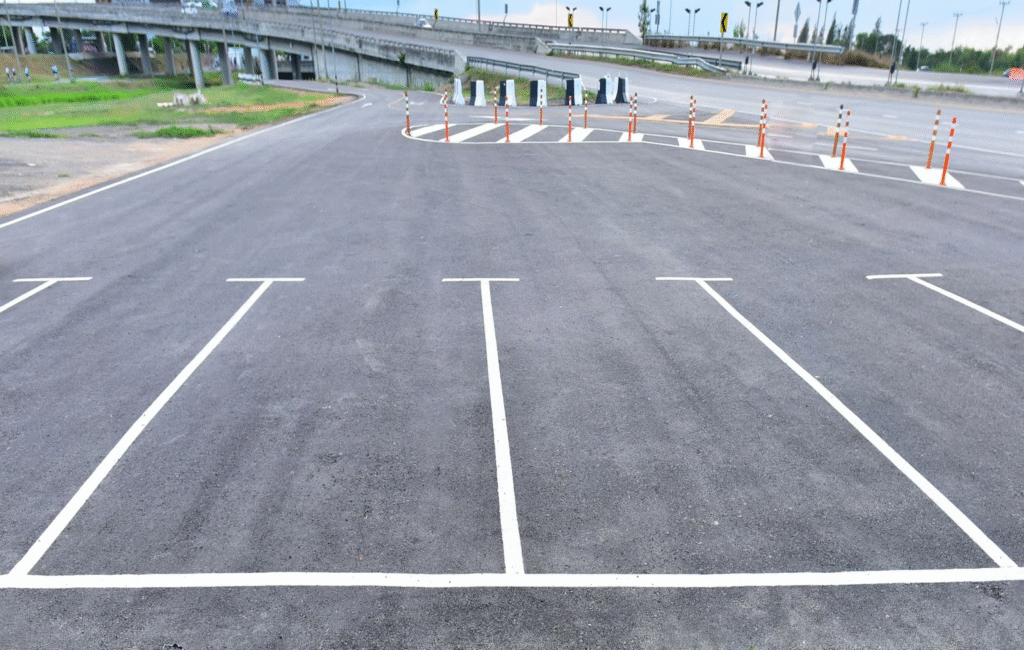
Residential Parking Lots
For residential parking lots, where traffic is low and vehicles are lighter, the goal is to maintain curb appeal and stop minor issues from turning into major repairs. Striping should be done every two to three years, while crack sealing should follow an annual inspection and be applied as needed.
Sealcoating is recommended every three to four years. In older neighborhoods, it’s wise to watch for tree root intrusion, which can damage pavement.
Commercial Parking Lots
Commercial parking lots experience steady vehicle flow with frequent turning and braking, so the focus should be on ensuring safety, maintaining ADA compliance, and preserving the property’s professional image.
Striping should be completed every 12 to 24 months, and crack sealing should be performed after twice-yearly inspections. Sealcoating is typically needed every two to three years, or every 1.5 years in harsher climates. To minimize disruption, work should be scheduled during off-hours or weekends.
Industrial Parking Lots
Durability is the top priority for industrial parking lots, which face heavy truck loads, forklift use, and constant stress. Striping should be carried out annually, and cracks should be inspected quarterly and sealed immediately if new ones form.
Sealcoating every 1.5 to 2 years helps protect the base layers from heavy loads. In high-load zones, thicker sealcoat layers or additional reinforcement can extend pavement life.
Why This Matters for ROI?
The Federal Highway Administration (FHWA) notes that preventive maintenance costs about $0.25 to $0.50 per square foot, while complete asphalt replacement can run between $3 and $5 per square foot, more than ten times the cost.
Following the proper maintenance schedule isn’t an expense; it’s an investment in extending pavement lifespan and significantly reducing long-term costs.
FAQs
How long does parking lot striping last?
Parking lot striping usually lasts between 18 and 36 months. The lifespan depends on weather exposure, paint quality, and daily traffic volume. Lots with heavy use or harsh winters may require restriping sooner to maintain visibility and safety standards.
How much does parking lot sealcoating cost?
Sealcoating typically ranges from $0.15 to $0.25 per square foot for large lots in good condition. Smaller lots or those needing significant crack repair before sealing may cost more per square foot. According to the U.S. Federal Highway Administration, preventive treatments like sealcoating are far more cost-effective than full resurfacing, which can cost over ten times as much.
Can parking lot crack sealing be done in cold weather?
Crack sealing works best when pavement temperatures are above 40°F (4°C) and surfaces are dry. Cold weather makes sealant harder to apply and weakens its bond, which can shorten repair life. While temporary cold-applied fillers can be used in winter, permanent repairs should be scheduled for warmer months for maximum effectiveness.
How often should I get my parking lot sealcoated?
Most properties benefit from sealcoating every 2–3 years. In areas with high traffic, intense sunlight, or frequent snow removal, reapplication every 1.5–2 years provides better protection. Avoid over-sealcoating, as too many layers can cause buildup and reduce surface traction.
Keep Your Parking Lot Safe, Attractive, and Long-Lasting
A well-maintained parking lot is the visitors’ first impression of your property. Regular striping keeps traffic organized and pedestrians safe, while timely crack sealing prevents water intrusion that can lead to costly structural damage. Consistent sealcoating enhances appearance and extends the pavement’s lifespan by up to 300%.
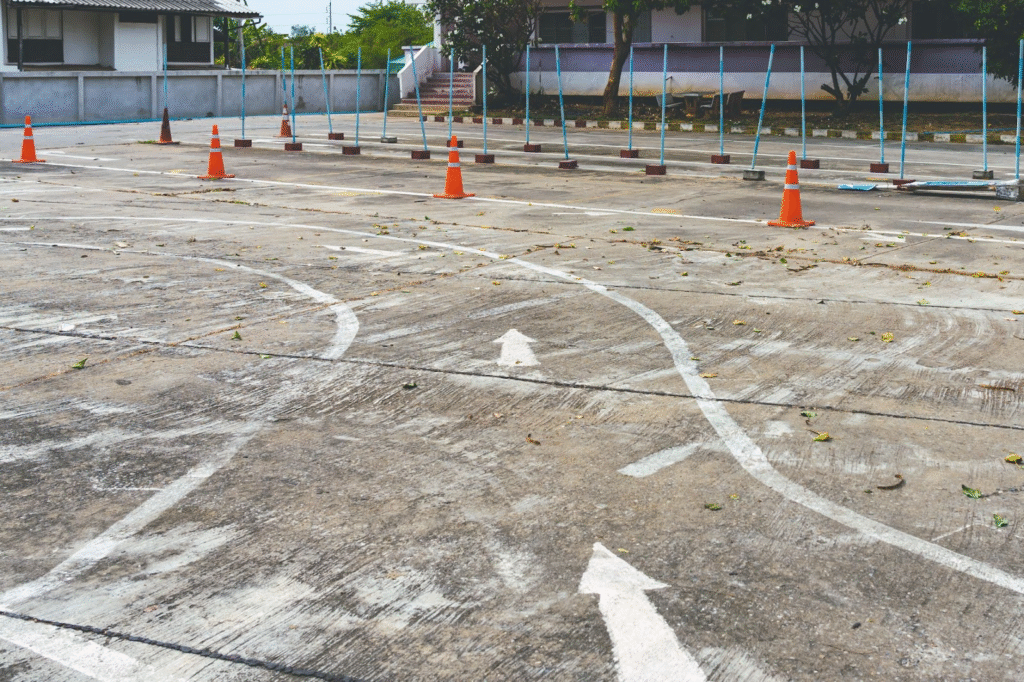
Investing in these proven maintenance services protects your asphalt from premature deterioration, reduces long-term repair costs, and maintains a professional, welcoming environment. At Asphalt Coatings Company, we deliver high-quality, cost-effective parking lot solutions tailored to your property’s needs.
Don’t wait for cracks to spread or paint to fade. Schedule your consultation today and keep your parking lot in perfect condition for years. Contact Asphalt Coatings Company to get started!

